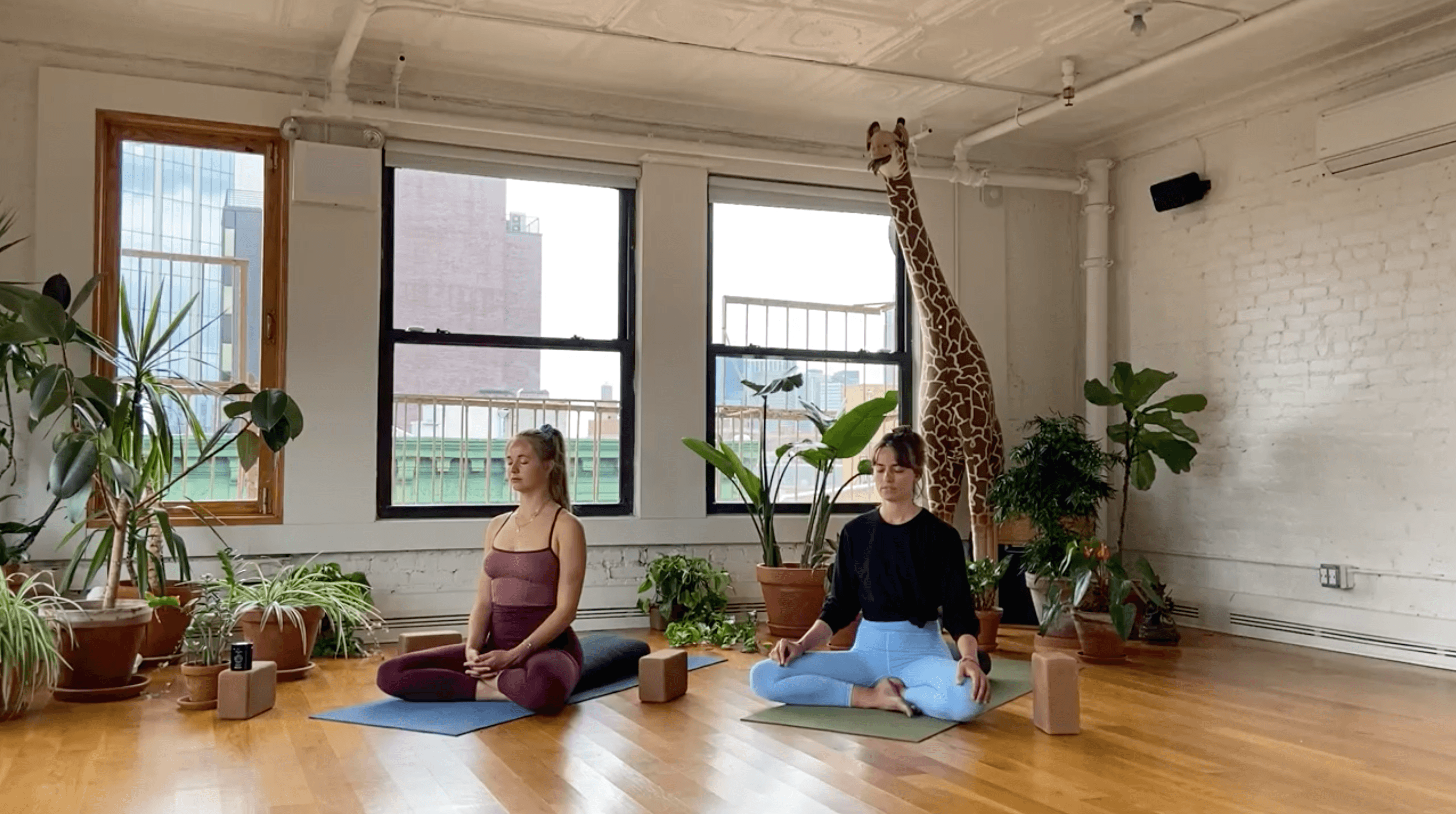
Yoga Is For... Mind Fog
Co-founders Krissy and Chloe of New York yoga studio SKY TING finish our 7-part yoga series with a class including clearing techniques like breathwork, forward folds and meditation to cleanse the landscape of the mind.
Familiar with that feeling where your brain feels like it isn’t quite working as it should be? Fuzzy thinking or ‘mind fog’ is characterized by poor memory recall, inability to focus, forgetfulness or confusion and can really interfere with your day-to-day life, from your performance at work to the quality of your relationships.
Mind fog can occur due to a number of reasons including chronic stress, sleep deprivation, nutrient deficiencies and periods of inactivity. Interestingly, overtraining in certain types of exercise can stimulate the sympathetic nervous system, the part of our autonomic nervous system that produces the “fight or flight” response. As exercise is a form of stress, this could inadvertently end up contributing towards mind fog.
Harvard Medical School states “movement therapies such as yoga, tai chi, and qi gong combine fluid movements with deep breathing and mental focus, all of which can induce calm.” Studies reiterate this, showing that yoga stimulates the second part of our autonomic nervous system, the parasympathetic nervous system which “lowers breathing and heart rate, decreases blood pressure, lowers cortisol levels, and increases blood flow to the intestines and vital organs.”
Our last-in-series class with New York yoga studio SKY TING includes clearing techniques like breathwork, forward folds and meditation to “cleanse the landscape of the mind” alongside use of NOOTRO-FOCUS, our cognitive supplement designed to heighten mental clarity and sharpen your focus.
Incorporating flow, meditation and breathwork for a full-rounded 45-minute class, co-founder Krissy Jones guides us to begin with child’s pose for its grounding and soothing benefits on the nervous system as you listen to your own breath: “The breath is such an amazing thing that we can anchor into at any given moment. It’s one of the most seminal cues in yoga and meditation because it’s always there; it’s always something we can focus on to bring us into the present moment.”
Prasarita Padottanasana, a wide-stance forward bend, allows blood to move towards your brain: “In yoga, you want to keep things moving and flowing. In nature, things that are stagnant get diseased and infected; it’s the same thing in your body—the things that stay stagnant like your joints, muscles or thoughts are what we worry about,” Krissy explains.

A technique previously incorporated in the series, Chloe brings acupressure into the practice during Padahastasana pose, a forward fold with the hands under the feet: “There’s a great acupressure point on the thumb mound that is often used if you’re having an intense headache, so especially when we’re thinking about focus and mind fog and any kind of malady into the mind space, letting yourself use pressure points to open up the rest of the physical space will bring more clarity into the mind.” The class ends with a seated meditation “to help empty thoughts, tension and clutter from the mental space. Meditation is mind fog's greatest enemy.”
Try the Yoga Is For Mind Fog class here.



